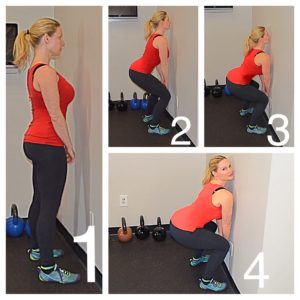Part 2 of 3 Part Series:
Part 2 – Face the Wall Squat (You Are Here)
Part 3 – Core Stability and Breathing Techniques
Getting better at squats is the simple matter of squatting more often. The more you practice with good form, the better you’ll get. Building the foundation to a better squat involves first learning the fundamentals with bodyweight-only movements, incorporating a better warm-up, working on your overall mobility, and developing more core strength.
Last week I introduced the steps for a killer Goblet Squat, but not everyone has the killer form needed to perform it effectively and safely. This week I will teach you the steps to perfect that squat by teaching the steps to do a Face the Wall Squat.
If you missed my first article this series, you can click here to read it.
Building the Foundation with Fundamentals
What is it?
How to do it:
As an added bonus, getting closer to the wall requires you to maintain almost perfect squatting form.
Benefits of the Wall Squat:
-
- Perfect for those that can’t maintain good squat form;
- Will give you a very good sense of balance. You will have to learn that your weight must be on your heels and you will learn how to move your body correctly. If you don’t, you fall backwards or stick your face into the wall.
- Great mobility tool;
- Strong core, quad, and back activation;
- Reduces risk of injury;
- Improves Spine Position and teaches resistance against forward collapse;
- Only a wall needed.
By doing the Face the Wall Squat consistently, you’ll see that the improvements you make squatting translate into other movements that you do everyday.
Do not do anything that hurts. If it hurts, there is something wrong. Do not force yourself into positions or over-exert yourself in the performance of this exercise. It is best considered as a stretch or movement practice. As always, consult your doctor before beginning any exercise program.
This is installment 2 of a 3 part series.
Part 3 – Core Stability and Breathing Techniques
We are proud to say that we’ve helped hundreds of people in Howard County and the surrounding areas learn and perfect their squat. If your looking for a personal trainer near Marriottsville, Turf Valley, Waverly Woods, Woodmark, West Friendship, Eldersburg, Sykesville, Woodstock, Cooksville, Ellicott City, Mt. Hebron, Clarksville, Fulton, Laurel, Burtonsville, Highland, Silver Spring, Columbia, Ellicott City, Glen Elg, and Maple Lawn we’d love to help you. Call us at 301-452-5547 to see for yourself. Mention this article for a free session!
